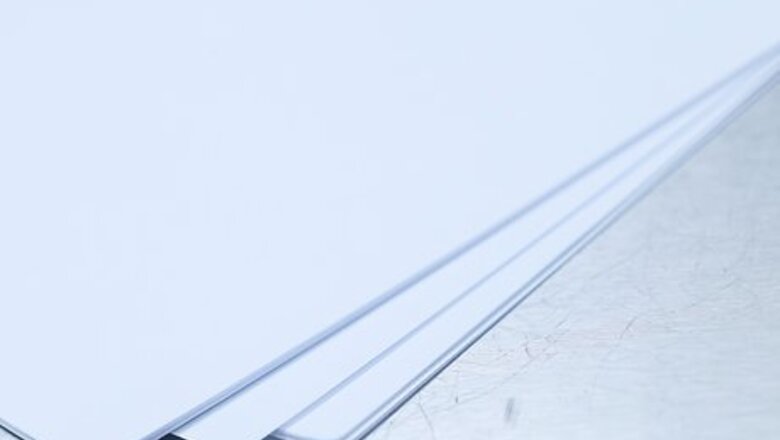
views
Making a Skeleton out of Paper
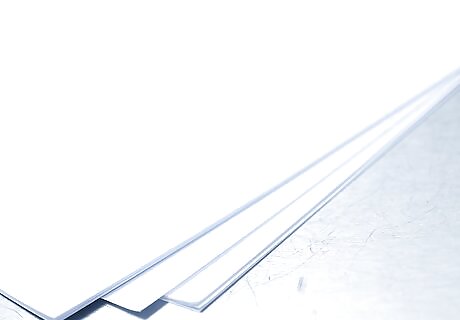
Choose paper. Pick the paper you will use to make your skeleton. Printer paper works fine and is cheap and available. Cardstock will hold its shape better and last longer, but it is also more expensive. Paper plates are a good alternative material with more strength than printer paper.
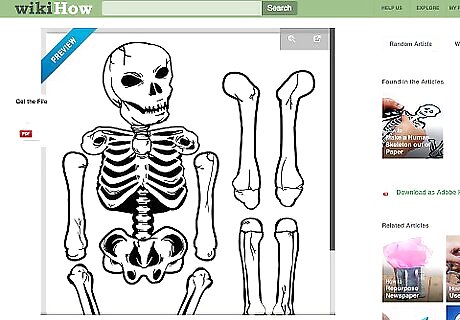
Find a skeleton image. Locate an image of a skeleton to use as a model. You can find printable skeletons on-line. A cartoon skeleton will be easier to work with than a very detailed scientific picture.
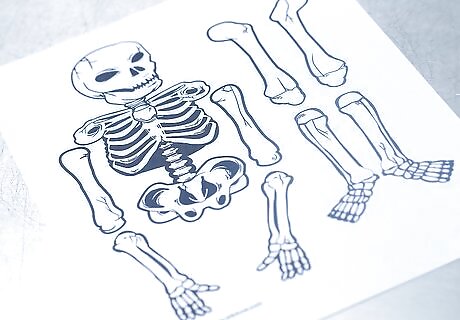
Divide the skeleton into parts. Separate out the parts of the skeleton that will make up your paper skeleton. Each part will be made out of one piece of paper, Cardstock, or paper plate. Skull (head) Rib cage Pelvis 2 Upper-arm bones 2 Lower-arm bones with hands 2 Upper-leg bones 2 Lower-leg bones with feet
Creating the Skeleton Parts
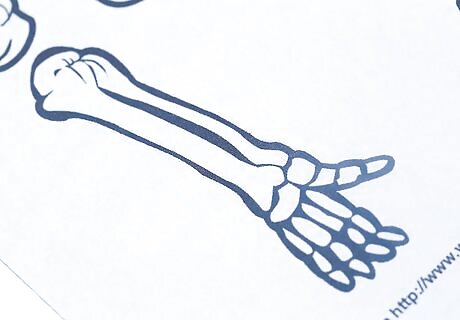
Create the arms. The arms have two parts, an upper and a lower arm. Use one piece of paper or Cardstock for each part of the arm. Trace the printed skeleton picture, or use the picture as a guide to draw the bones on paper. For a basic skeleton, draw out two cartoon bone shapes. Use one for the upper arm and one, with a hand on it, for the lower arm. For a more anatomically correct skeleton, note that the arm has more than two bones in it. Follow a more detailed model and outline more detailed shapes or draw details on the parts of the arm. The upper arm has one bone, the humerus. The lower arm has the radius and the ulna. The hand has many bones in it. For a detailed skeleton, draw these
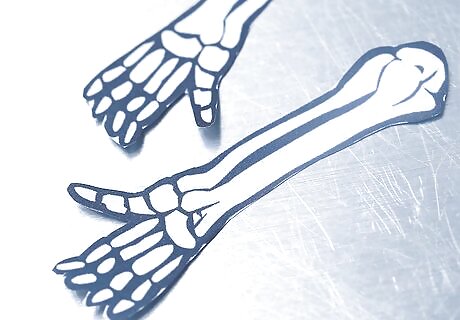
Cut out the arms. Use scissors to cut around the outlines of the arms.
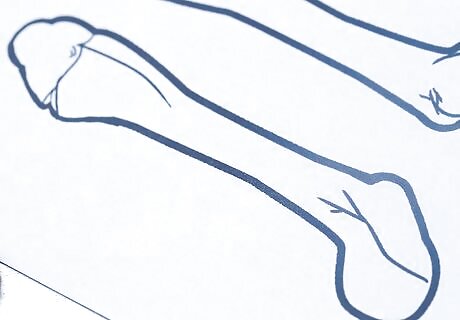
Create the legs. The legs are similar to the arms. They have two main sections, an upper leg and a lower leg. Once you have created the leg bones, cut them out. For a basic skeleton, draw out two cartoon bone shapes. Use one for the upper leg and one, with a foot on it, for the lower leg. For a more detailed skeleton, note that the leg has more than two bones in it. Follow a more detailed model and outline more detailed shapes or draw details on the parts of the arm.The upper leg is called the femur; the lower leg bones are the tibia and fibula. The foot is made of many bones called the tarsals, metatarsals and phalanges. For a more anatomically correct skeleton, make the legs one and a half times the length of the arms.
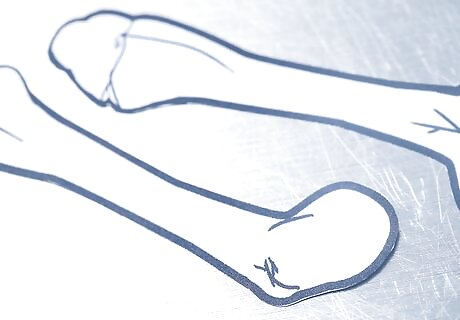
Cut out the legs. Use scissors to cut around the outlines of the legs.
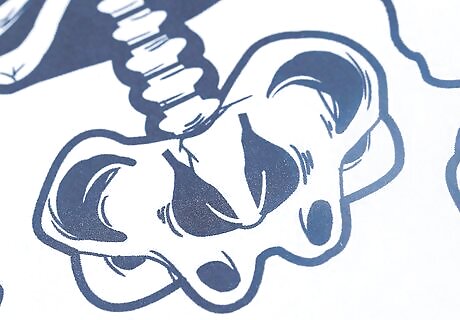
Make the ribs and pelvis. Follow the drawing to create the ribs and pelvis. Then cut them out. To be anatomically correct, make 12 pairs of ribs. For more detail draw shoulder blades, sockets, and collar bones near the top of the ribs. For a detailed pelvis, include the sacrum and coccyx, two bones at the end of the spine.
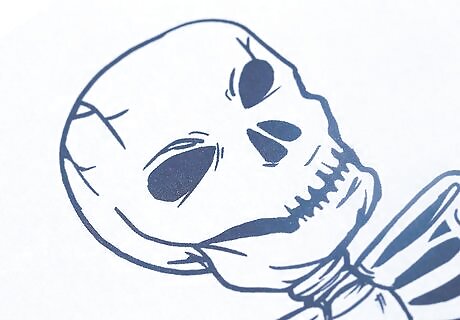
Create the head. Draw a skull on paper and cut it out. Make sure to include eye sockets and a nose socket. For a more detailed skull, draw a bottom jaw and teeth.
Assembling the Skeleton

Punch holes. Use a hole puncher to add holes to connect the parts of your skeleton. If you don't have a hole puncher, use a scissor or a knife. Punch one hole at the bottom of the skull. Punch a hole at the top of the ribs to connect the skull and at the bottom of the ribs to connect the pelvis. Punch one hole in the top of the pelvis. Punch holes in the top and bottom of the upper arms and upper legs. Punch holes at the top of the lower arms and lower legs.
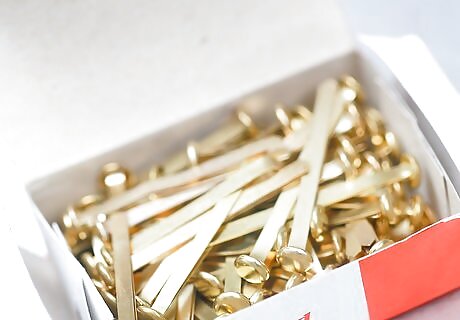
Choose fasteners. The skeleton parts can be attached to each other with loops of string or brass fasteners. Brass fasteners can be found at office supply or craft stores. String gives the skeleton a looser, dangly look. Brass fasteners can be fastened tightly to hold bones in particular positions.
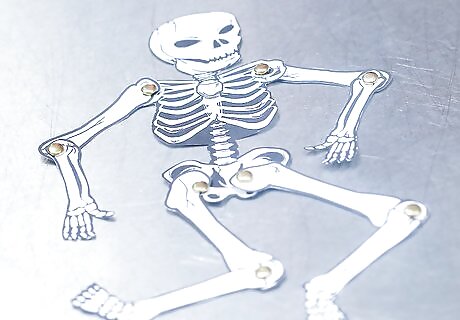
Attach the skeleton pieces. Fasten the skeleton pieces together using the brass fasteners or string. The bottom of the skull connects to the top of the ribs. The upper legs fasten to either side of the hip/pelvis bones. The shoulder blades connect to the upper arms. The lower arms connect to the upper arms and the lower legs connect to the upper legs.











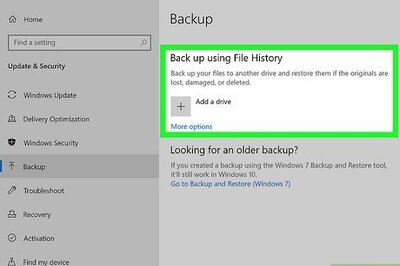


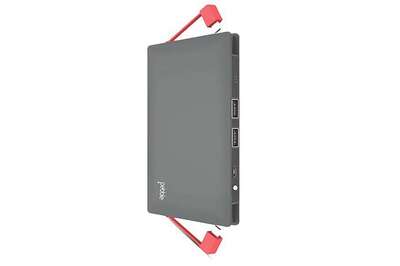




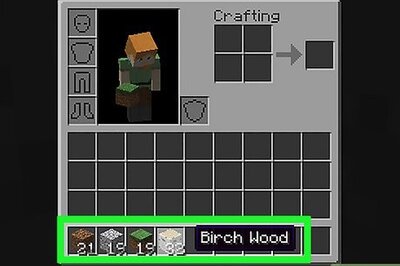
Comments
0 comment